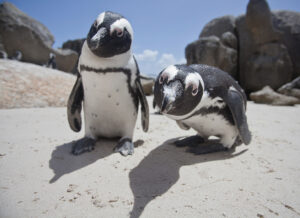A passion for the natural world drives many of our adventures. And when we’re not actually outside, we love delving into the discoveries about the places where we live and travel. Here are some of the best natural history links we’ve found this week.
Elephants are dying in droves in Botswana: Between January and March 2021, 39 Africa elephants turned up dead in Botswana. All deaths occurred in the Moremi Game Reserve, the same region where 350 elephants died in mid-2020. Preliminary results indicate that cyanobacteria toxins are to blame. Water sources in the area are becoming warmer, creating an environment in which the toxic cyanobacteria thrive.
Scientists have grown a mini beating heart: Researchers in Vienna have grown tiny 3D heart-like organs in the lab. Made from human stem cells, the organoids, as they’re called, are the size of a sesame seed and beat the same way our hearts do. Unlike previous efforts that required artificial scaffolding, these cells organized themselves to grow a hollow chamber. Scientists hope that the mini-hearts will provide a better understanding of how the cardiac system responds to disease.

The largest iceberg in the world. Photo: ESA/Earth Observation
An iceberg bigger than Rhode Island
World’s largest iceberg breaks away from Antarctic ice shelf: An iceberg bigger than Majorca has broken away from the Ronne Ice Shelf into the Weddell Sea. Unimaginatively named A-76, the iceberg is 4,320 square kilometres in area and is currently the largest iceberg in the world. Of course, it is bigger than Rhode Island, the standard comparison for such giant objects. The Antarctic region from which it comes is generally unaffected by climate change. “[The break-off] is part of a natural cycle,” says Alex Brisbourne, a glaciologist at the British Antarctic Survey.
Scientists dig deepest ocean hole in history: Researchers off the coast of Japan have drilled the deepest ocean hole in the history in the Pacific Ocean. The hole reaches nine kilometres below the surface of the ocean. It took just two hours and 40 minutes for the giant piston corer to reach the bottom of the Japan Trench. The team extracted a 37m-long sediment core from the bottom of the sea. The site is very close to the epicentre of the 2011 Tohoku-oki earthquake, the largest ever to strike Japan. Scientists hope that the sediments will help them understand the region’s earthquake history.

Researcher want to find out if tardigrades could survive in space. Photo: Forbes.com
The indestructible Tardigrade
Tardigrades shot from gun to see if they can survive space travel: Tardigrades, also known as water bears and moss piglets, are microscopic invertebrates that are found almost everywhere water exists. If required (by drought, for example), they are able to drain their cells of liquid and enter suspended animation. In this state, they can survive everything from subzero temperatures to radiation. Researchers have put the Tardigrades into nylon bullets and fired them at sand targets in a vacuum chamber at speeds of up to 1,000 metres per second to see if they could withstand being shot onto other planets.
Death Valley is no longer the hottest place on Earth: Death Valley has held the record for the world’s hottest air temperature since 1913 when Furnace Creek reached 56.7°C. Recently, two locations have surpassed Death Valley at its hottest. Satellite data reveal that the Lut Desert in Iran and the Sonoran Desert along the Mexican-U.S. border have reached a sizzling 80.8°C.






